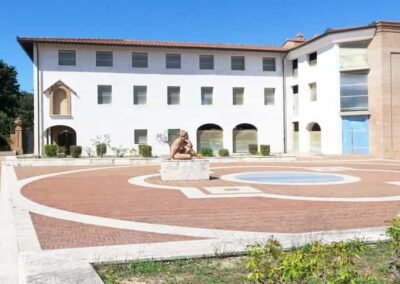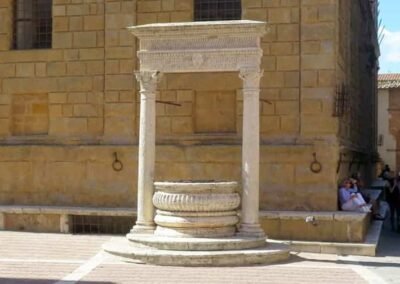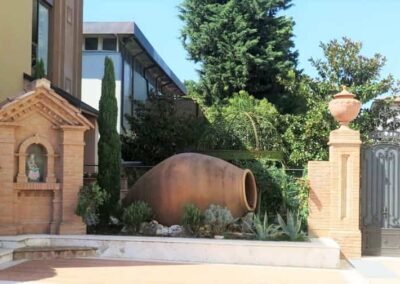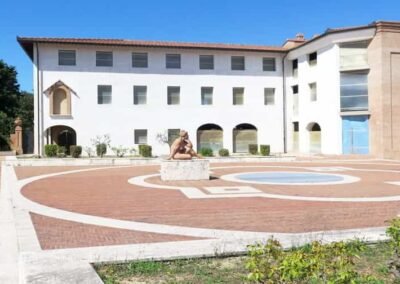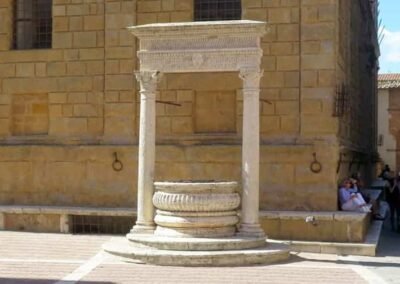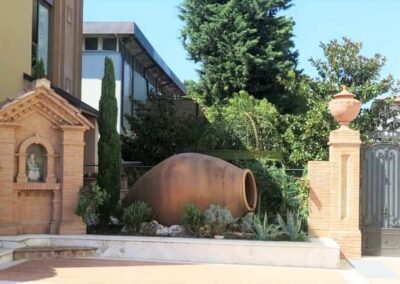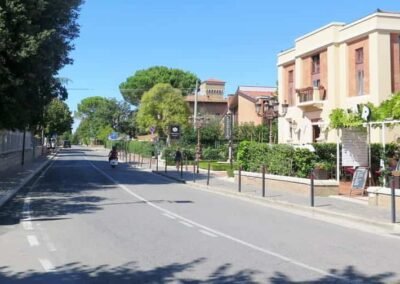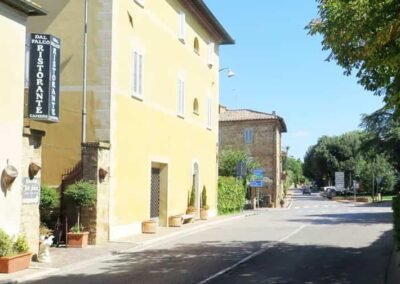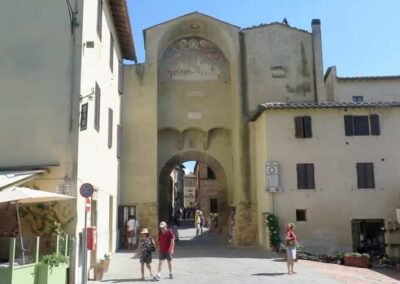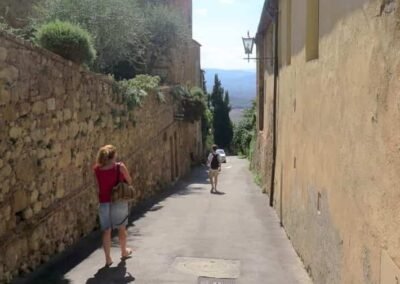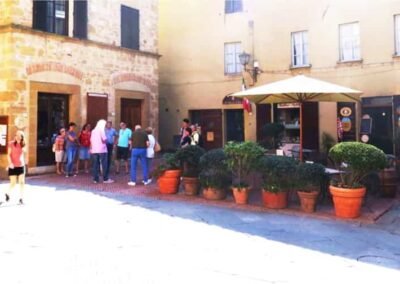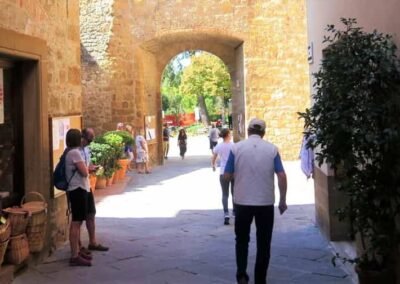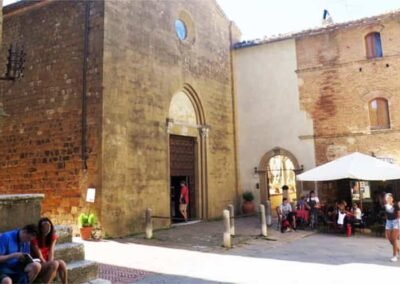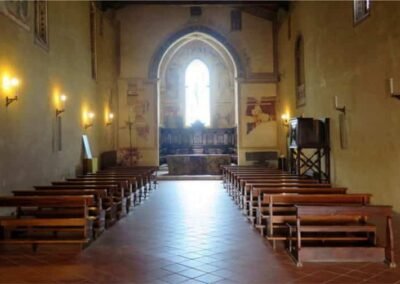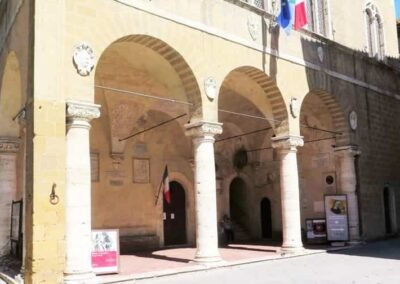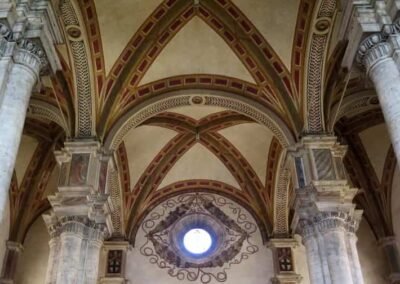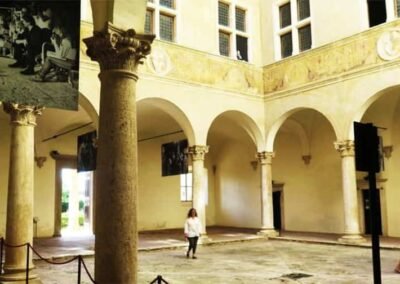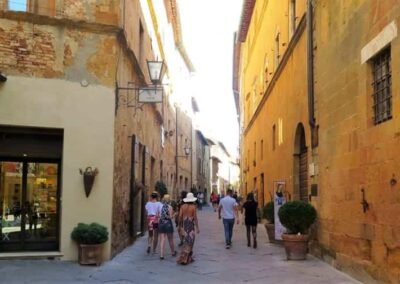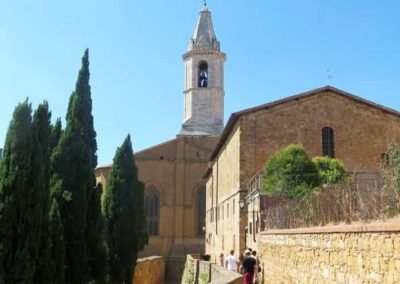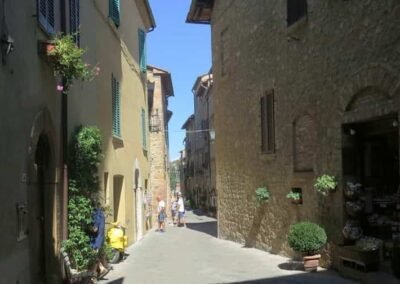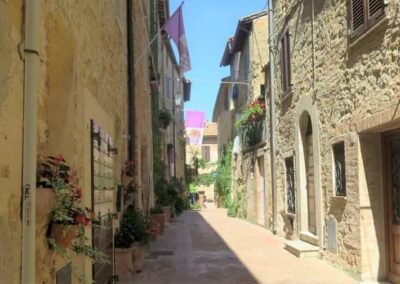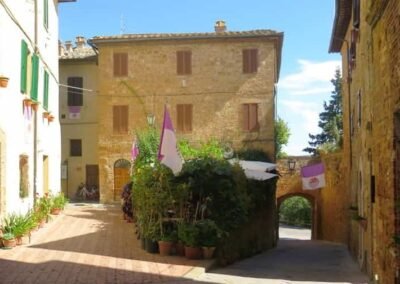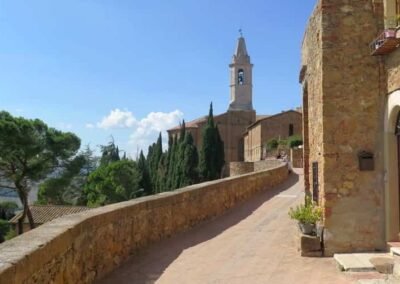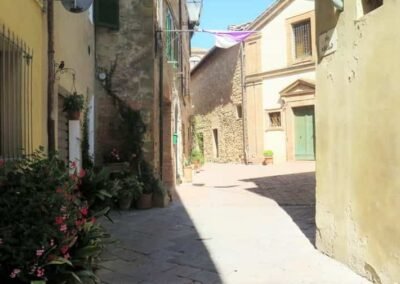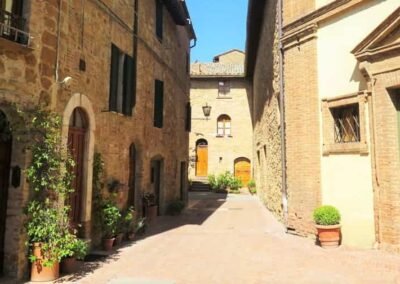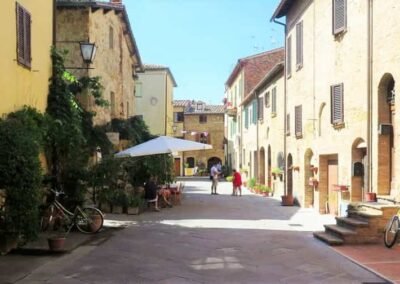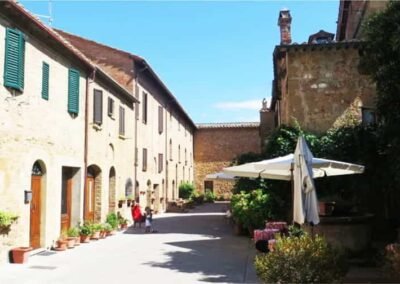HOME
THE REGIONS OF ITALY
PLACES IN ITALY
Italy in Photos
Via Pian del Mandorlo, 53026 Pienza, Italy (September 2018)
Pienza
Nestled in the heart of Tuscany’s Val d’Orcia, Pienza is a small yet historically and culturally significant town that epitomizes the Renaissance ideals of beauty, harmony, and humanism. Known as the “Ideal City” or the “City of Pius,” Pienza was transformed in the 15th century under the vision of Pope Pius II, who sought to create a utopian town that reflected the Renaissance’s humanistic values. Today, Pienza is a UNESCO World Heritage site, celebrated for its architectural elegance, breath-taking landscapes, and rich history. Pienza’s history is deeply intertwined with the life of Pope Pius II, born Enea Silvio Piccolomini in the nearby town of Corsignano. After ascending to the papacy in 1458, Pius II sought to transform his humble birthplace into a model Renaissance town. To achieve this vision, he commissioned the renowned architect Bernardo Rossellino, a pupil of Leon Battista Alberti, one of the leading figures of the Italian Renaissance. The project was ambitious: to redesign the medieval village of Corsignano into a city that embodied the ideals of Renaissance urban planning, with an emphasis on proportion, order, and beauty. The result was Pienza, a town that perfectly balances architecture and nature, with its carefully planned streets and harmonious buildings set against the rolling hills of the Val d’Orcia. The transformation of Pienza was completed in just four years, between 1459 and 1462, making it one of the earliest examples of Renaissance town planning in Europe.
At the heart of Pienza lies Piazza Pio II, a trapezoidal square that serves as the focal point of the town’s design. The piazza is surrounded by several architectural masterpieces, each reflecting the Renaissance ideals of symmetry and beauty. The Cathedral of Pienza (Duomo di Pienza) is the centrepiece of the piazza, with its elegant façade and spacious interior bathed in natural light. The cathedral’s design combines Gothic and Renaissance elements, showcasing Rossellino’s architectural genius. Inside, the cathedral houses several notable artworks, including altarpieces by the Sienese School. Adjacent to the cathedral is the Palazzo Piccolomini, the former residence of Pope Pius II. The palazzo is a quintessential example of Renaissance architecture, with its symmetrical façade, arcaded courtyard, and meticulously designed gardens overlooking the Val d’Orcia. The palazzo’s loggia offers stunning views of the surrounding countryside, embodying the Renaissance ideal of bringing nature into harmony with urban life. Opposite the cathedral stands the Palazzo Borgia, which now houses the Diocesan Museum, displaying religious artifacts and art from the region. Together with the Palazzo Comunale, which serves as the town hall, these buildings create a harmonious architectural ensemble that has been admired for centuries.
Beyond its architectural splendour, Pienza is deeply connected to the natural landscape of the Val d’Orcia, a region characterized by its rolling hills, cypress-lined roads, and fertile fields. The area around Pienza has long been celebrated for its beauty, inspiring countless artists, poets, and travellers. The town’s design deliberately integrates the surrounding landscape, creating a seamless connection between the urban environment and the natural world. Pienza is also known for its rich culinary traditions, particularly its production of pecorino cheese, which is renowned throughout Italy. Visitors can explore local markets, taste artisanal products, and experience the flavours of Tuscany in the town’s many restaurants and cafes. Today, Pienza remains a living testament to the ideals of the Renaissance, attracting visitors from around the world who come to experience its unique blend of history, art, and natural beauty. Walking through Pienza’s streets is like stepping back in time, with every corner revealing a new architectural wonder or a stunning view of the Tuscan countryside. The town’s preservation as a UNESCO World Heritage site ensures that Pienza’s Renaissance legacy will continue to inspire future generations. Whether you are an art lover, a history enthusiast, or simply someone seeking the tranquillity of the Tuscan hills, Pienza offers a uniquely enriching experience.
Worth a Visit
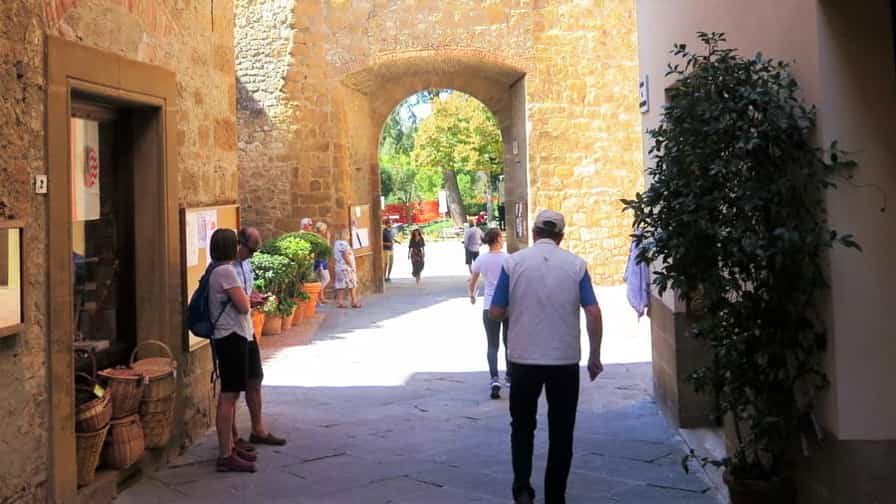
Piazza Martiri della Libertà is one of the charming squares in Pienza, a Renaissance jewel in the heart of Tuscany. Nestled within the town’s historic center, this piazza captures the intimate atmosphere that characterizes Pienza, a UNESCO World Heritage Site. Unlike the grand central Piazza Pio II, Piazza Martiri della Libertà offers a quieter, more local ambiance, where daily life unfolds against a backdrop of medieval and Renaissance architecture. Here, visitors can admire traditional stone buildings, small shops, and cafés that invite you to linger and soak in the rhythm of Tuscan life. The square is often a meeting place for residents and a starting point for wandering through Pienza’s narrow streets, which open onto stunning views of the Val d’Orcia countryside. Both historically significant and deeply tied to the community’s identity, Piazza Martiri della Libertà reflects the balance of heritage and everyday life in this timeless hilltop town.
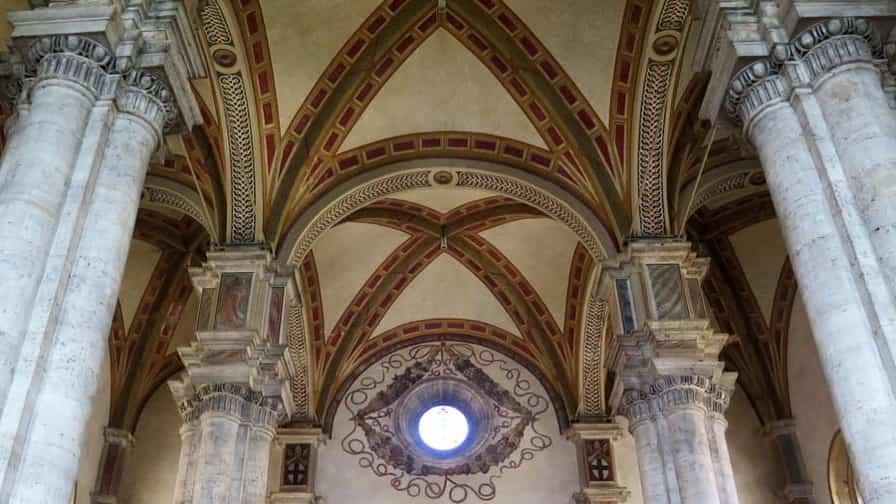
The Concattedrale di Santa Maria Assunta, commonly known as Pienza Cathedral, stands as the spiritual and architectural heart of Pienza, Tuscany. Commissioned by Pope Pius II in the mid-15th century, the cathedral was designed by the Florentine architect Bernardo Rossellino, who transformed the town into a model Renaissance city. The church’s façade, inspired by classical harmony and simplicity, contrasts beautifully with the surrounding medieval structures, while its interior reflects both Gothic and Renaissance influences. Tall columns and ample windows create an atmosphere of light and space, emphasizing the humanist ideals of balance and clarity. Inside, visitors can admire important artworks, including altarpieces by prominent Sienese painters of the period. As part of Pienza’s UNESCO-listed historic center, the Concattedrale di Santa Maria Assunta is not only a place of worship but also a symbol of the cultural vision of Pope Pius II, who sought to unite faith, art, and humanist philosophy in his beloved hometown.
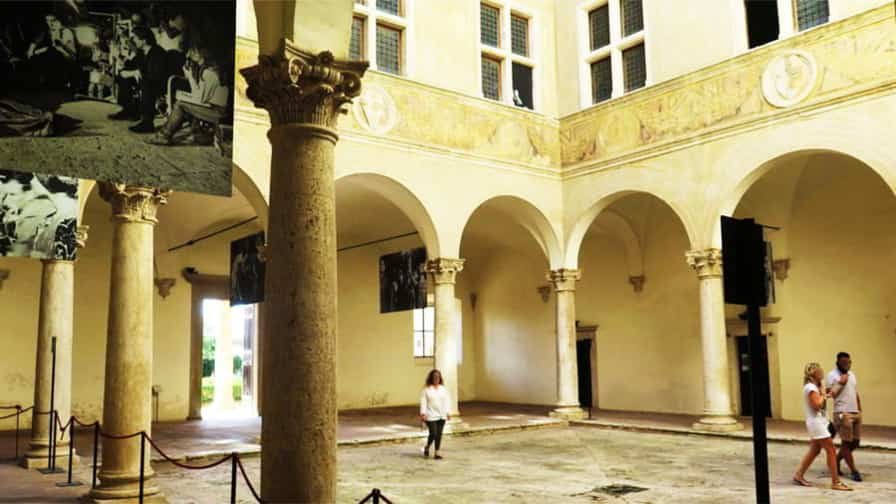
Palazzo Piccolomini in Pienza is one of the finest examples of early Renaissance architecture in Italy. Built in the mid-15th century by Bernardo Rossellino for Pope Pius II, the palace was part of the ambitious project to transform Pienza into the “ideal city” of the Renaissance. Its elegant three-story façade, with harmonious proportions and classical lines, reflects the new humanist ideals of order and balance. Inside, the palace preserves beautifully furnished rooms that showcase Renaissance lifestyle and culture, including portraits, tapestries, and period furniture. One of its highlights is the loggia and hanging garden, which open onto breathtaking views of the Val d’Orcia, a UNESCO World Heritage landscape. The Palazzo also houses a museum that traces the history of the Piccolomini family and the transformation of Pienza. Today, Palazzo Piccolomini stands as both a cultural monument and a window into the vision of Pope Pius II’s Renaissance dream.
Photo Gallery of Walk – Piazza Dante Alighieri to Via dell’Apparita
Approximately 0.71 km – 0.44 miles
The walk starts in Piazza Dante Alighieri – Porta al Murello chiamata anche Porta al Prato – Piazza Martiri della Liberta – Corso il Rossellino – Piazza Pio II – Vicolo Fortuna – Via del Casello – Walk back along Vicolo Fortuna to Corso il Rossellino – Vic. Cieco – Via del Casello – Walk back to Corso il Rossellino – Via San Carlo – Via delle Case Nuove – Via dell’Apparita
Please note, some of the street names were taken from the Michelin Street map for Pienza – https://www.viamichelin.com/web/Maps/Map-Pienza-53026-Siena-Italy
COPYRIGHT © 2018-2025 ITALY IN PHOTOS - ALL RIGHTS RESERVED
